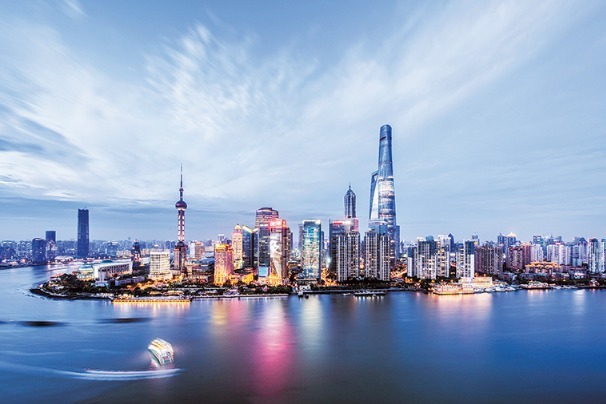Guangxi FTZ to play bigger role in commerce with RCEP


Advanced industrial development, opening-up to benefit biz connections
With China supporting its pilot free trade zones to play a bigger role in facilitating its opening-up and high-quality industrial growth, the China (Guangxi) Pilot Free Trade Zone has embarked on a mission to establish itself as a pivotal nexus, advancing closer economic and trade connections with other member economies of the Regional Comprehensive Economic Partnership.
Located in South China's Guangxi Zhuang autonomous region, the Guangxi FTZ will vigorously implement a strategic upgrade of its three areas — Nanning, Qinzhou Port and Chongzuo. It will enhance institutional mechanisms, and optimize and solidify cross-border trade to increase both volume and quality, said government officials.
Guangxi FTZ is set to advance 10 significant initiatives. These encompass its enhancement of cross-border financial integration, and the facilitation of fast and convenient cross-border transportation, according to information recently released by the regional government.
The government said that the ultimate goal is to create a central zone that streamlines market operations for both domestic and international cycles, with a specific focus on markets within the Association of Southeast Asian Nations and the RCEP.
Established in August 2019, Guangxi FTZ has attracted cumulative foreign investment of $1.57 billion and achieved a total import and export volume of 832.88 billion yuan ($113.4 billion) over the past four years.
Remarkably, this has been accomplished with less than 0.05 percent of the region's total land area, or 119.99 square kilometers, contributing to 39.4 percent of Guangxi's foreign investment and 37.1 percent of its foreign trade during the same period.
"We will continue to leverage reforms and innovations to drive industrial clustering, with a focus on three distinctive features — targeting the ASEAN market, serving the New International Land-Sea Trade Corridor, and promoting open development along the border," said Sui Guohua, vice-chair of Guangxi's regional government.
Guangxi's foreign trade jumped by 43.2 percent year-on-year in the first half, with trade with ASEAN growing by 92.6 percent. ASEAN has remained the region's largest trading partner for 23 consecutive years, data from Guangxi's regional government showed.
Speaking at a news conference in Beijing in late August, Li Fei, vice-minister of commerce, said that China will comprehensively expand its cooperation with ASEAN, jointly boost the trade scale, enhance cross-border e-commerce cooperation, and continue to support investment cooperation in sectors such as steel, petrochemicals, textiles and automotives.
Shi Guowei, president of Guangxi Xinzhong Industrial Investment Co Ltd, a Nanning-based logistics and warehouse service provider, said that the favorable policies offered by Guangxi FTZ have greatly benefited businesses operating within the China-Singapore Nanning International Logistics Park.
Global players and China's major logistics companies, such as Singapore's Global Logistic Properties Ltd and Zhuhai Wanwei Logistics Development Co Ltd, have already built a presence within this park and have cumulatively handled over 3.15 million metric tons of freight.
Total invested capital in the construction projects of the China-Singapore Nanning International Logistics Park to date has reached approximately 7.8 billion yuan, Shi added.
Eager to boost the country's foreign trade and attract more global capital, China released a key work list in June for its pilot free trade zones (2023-25) aimed at promoting high-quality growth.
The work list, formulated by the Ministry of Commerce in collaboration with a number of central government departments and local authorities, outlines 164 key initiatives to be autonomously implemented by Chinese FTZs between 2023 and 2025.
Each FTZ will focus on seven to 10 key tasks, including significant institutional innovations, development of key industries, construction of important platforms and major project activities.
The work list provides a clear and itemized outline of the construction directions and key areas of focus for the next three years, based on the strategic positioning and development goals assigned by the central government to each pilot FTZ, said Chen Zhenchong, director-general of the Department of Free Trade Zone and Special Control Area under the General Administration of Customs.
For instance, FTZs in Guangxi and Southwest China's Yunnan province are encouraged to leverage their advantageous border locations. They will actively promote border residents' cross-border trade and processing businesses for imported commodities, fostering innovative development in border trade.




